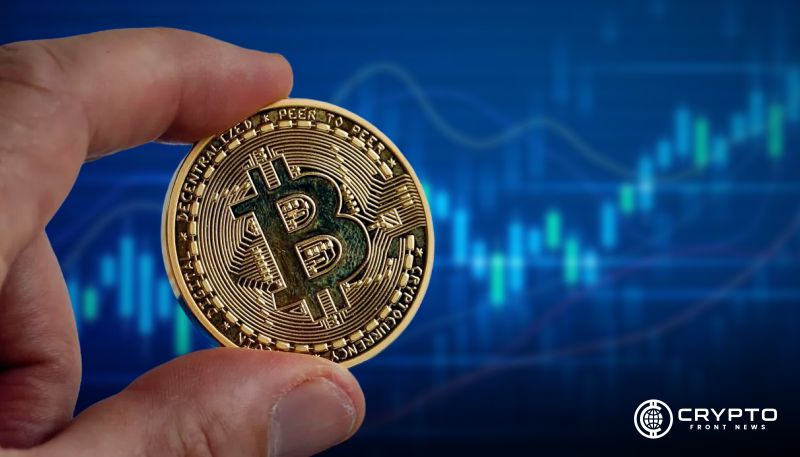- Bitcoin demand stays strong despite falling exchange reserves, signaling robust market interest.
- Positive Demand/Price Ratio suggests continued buying pressure, even as Bitcoin prices stabilize above $60K.
- Bitcoin withdrawals from centralized exchanges are ongoing, indicating changing investor behavior and storage preferences.
According to recent market data, the demand for bitcoin is still strong even if exchange reserves have significantly decreased. Analysts have highlighted shifting market dynamics as demand stays positive while exchange holdings decrease.
Demand Trends and Price Movements
Demand/price ratio and price volatility over time in Bitcoin are related to each other, as discovered by Axel Adler Jr. The “Bitcoin Daily Apparent Demand” graph depicts Bitcoin’s price variance, trend in demand, and volatility during 2022 and the first part of 2025. Bitcoin price rose with demand to almost $40K at the beginning of 2022 and fell to sub-$20K during mid-2022. There was regular upward price recovery in 2023 to over $30K, and purchasing behavior increased.
The price of Bitcoin exceeded $70,000 at the start of 2024, and demand was maximized. Though prices were still above $60K, demand began to weaken halfway through 2024. Despite a massive drop in demand, Bitcoin could keep its price above $60K in early 2025, indicating reduced buying pressure. There has been a modest increase in demand, which would signify that trends in the market are changing.
According to the graph, there is a direct correlation between variations in demand and the price of Bitcoin; price increases usually coincide with increases in demand. Increased market activity was also shown by the correlation between notable price changes and spikes in volatility.
Centralized Exchange Reserves Decline
The “Centralized Exchange Bitcoin Reserves – % Drawdown from Previous All-Time-High” chart shows the profound decline in Bitcoin reserves on centralized exchanges that Julio Moreno highlighted. Between mid-2021 and early 2025, this chart shows reserve drawdowns on Binance, Bitfinex, OKX, and other exchanges.
Whereas Bitfinex was more volatile, Binance showed a consistent downtrend as Bitcoin reserves started shrinking in late 2021 and persisted through 2022. Intense Bitcoin outflows were reflected in drawdowns of over 24% incurred by certain exchanges midway through 2022.
Reserves were low in 2023 and 2024. Binance reserves dwindled progressively, while Bitfinex’s reserves fluctuated wildly. Reserves at large exchanges were at historical lows by early 2025, with drawdowns of almost or over 36%. The data indicates the continued withdrawal of Bitcoin from centralized exchanges.
Market Implications
Market analysts pointed out that the concurrent decrease in exchange reserves and the positive demand could affect the dynamics of supply and demand for Bitcoin, and that the continuous withdrawals from centralized exchanges underscore shifting storage preferences and investor behavior.





